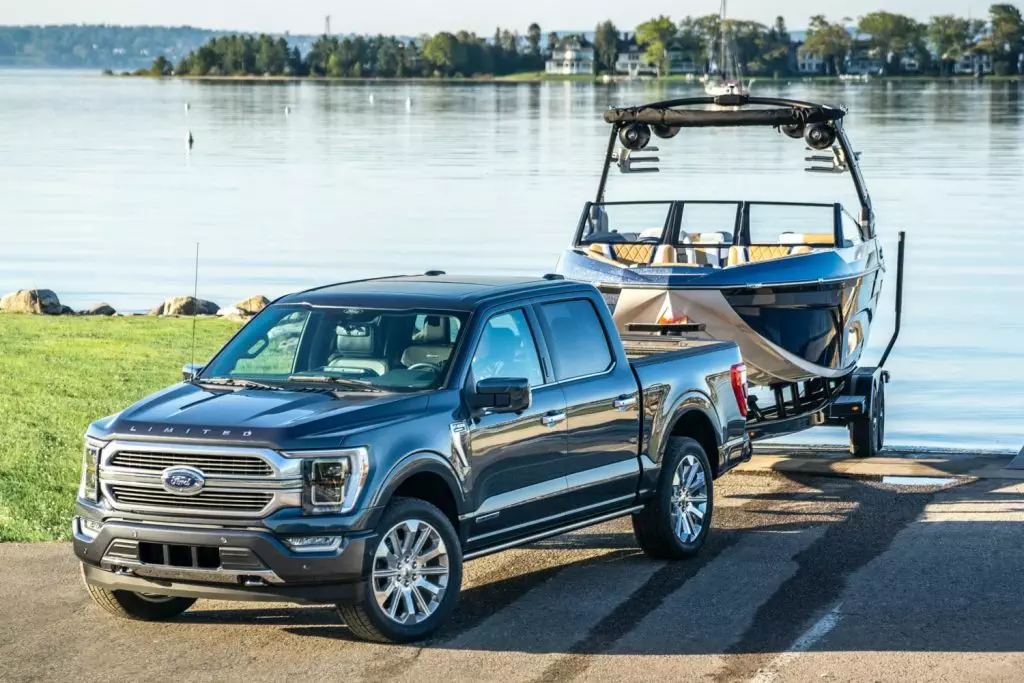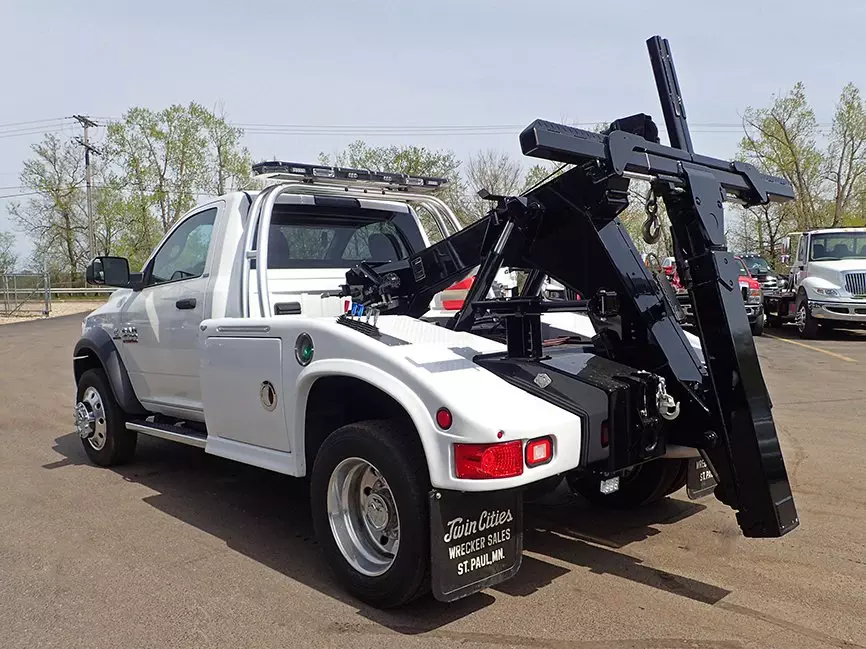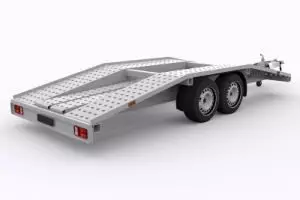Have you ever wondered how much weight a light truck can tow? In this article, we will explore the towing capacity of light trucks and provide you with all the information you need. Whether you’re planning on hauling a boat, a trailer, or any other heavy load, understanding the towing capabilities of a light truck will help ensure a safe and successful journey. Join us as we delve into the world of light truck towing and uncover the possibilities that lie ahead.

This image is property of www.hollywoodtowing.com.
Factors that Determine Towing Capacity
When it comes to towing, there are several important factors that determine a light truck’s towing capacity. Understanding these factors is crucial for any truck owner who wants to use their vehicle for towing purposes. From the gross vehicle weight rating to the trailer hitch and receiver, each element plays a critical role in determining how much weight a light truck can safely and effectively tow. In this comprehensive article, we will delve into each of these factors, explaining their importance and how they impact a light truck’s towing capacity.
Gross Vehicle Weight Rating (GVWR)
1. Definition and Importance
The Gross Vehicle Weight Rating (GVWR) is a crucial factor that determines how much weight a light truck can safely carry, including the vehicle’s own weight. It represents the maximum amount of weight a vehicle can handle, including the passengers, cargo, and even the tongue weight of a trailer. The GVWR is determined by the manufacturer and is typically displayed on a label inside the driver’s door jamb or in the owner’s manual.
2. Impact on Towing Capacity
The GVWR directly affects a light truck’s towing capacity because it sets the limit on the total weight the vehicle can handle. When determining the maximum towing capacity, manufacturers take into account the GVWR, ensuring that the truck can safely tow a certain weight without exceeding its total weight limit. Therefore, the higher the GVWR of a light truck, the greater its towing capacity can be.
3. How to Determine GVWR for a Light Truck
To determine the GVWR of a light truck, refer to the label located inside the driver’s door jamb or consult the owner’s manual. This label will provide the specific weight rating for your vehicle. It is crucial to remember that exceeding the GVWR can lead to dangerous situations on the road, compromising the vehicle’s performance, stability, and safety. Therefore, always adhere to the GVWR guidelines provided by the manufacturer.
Gross Combined Weight Rating (GCWR)
1. Definition and Significance
The Gross Combined Weight Rating (GCWR) is another vital factor that affects a light truck’s towing capacity. It refers to the maximum allowable total weight of the truck, including its cargo and any attached trailers. In simpler terms, the GCWR accounts for the combined weight of the truck, trailer, passengers, and cargo.
2. Relationship with Towing Capacity
The GCWR directly influences a light truck’s towing capacity by setting the upper limit on the total weight it can tow. This rating takes into consideration the vehicle’s towing capabilities, engine power, cooling system, and other factors to ensure that the truck can safely handle the combined weight of the trailer and its contents. It is essential to understand the GCWR of your light truck to determine the maximum weight you can tow.
3. How to Calculate GCWR
To calculate the GCWR for your light truck, you will need to add the Gross Vehicle Weight Rating (GVWR) of the truck to the weight of the loaded trailer and its contents. The sum of these weights should not exceed the GCWR. It is crucial to note that the GCWR can vary depending on the specific model and configuration of the light truck. Therefore, refer to the manufacturer’s guidelines or consult the owner’s manual for the accurate GCWR for your vehicle.
Axle Ratio
1. Understanding Axle Ratio
The axle ratio refers to the number of turns the driveshaft completes to turn the rear axle wheels once. It is represented by a numerical ratio, such as 3.55:1 or 4.10:1. A lower numerical value indicates a higher gear ratio, which means the driveshaft needs to complete fewer turns to rotate the wheels. Conversely, a higher numerical value indicates a lower gear ratio, requiring more turns of the driveshaft to achieve a wheel rotation.
2. Influence on Towing Capacity
The axle ratio has a significant impact on a light truck’s towing capacity. A lower ratio, such as 3.21:1, is better suited for fuel efficiency and everyday driving. However, it may limit the truck’s towing capacity. On the other hand, a higher ratio, such as 4.10:1, provides better torque and towing capability, allowing the truck to tow heavier loads with ease. Therefore, selecting the right axle ratio is essential for maximizing a light truck’s towing potential.
3. Optimum Axle Ratio for Light Trucks
Determining the optimum axle ratio for a light truck depends on the specific towing needs and preferences. If you plan to tow heavy loads frequently, a higher gear ratio, such as 3.73:1 or 4.10:1, would be more suitable. However, if fuel efficiency is a priority, a lower gear ratio, like 3.21:1, may be preferable. It is crucial to consider your typical usage and towing requirements when selecting the optimum axle ratio for your light truck.

This image is property of hips.hearstapps.com.
Engine Power and Torque
1. Horsepower and Torque Explained
The engine power and torque are two critical measures of a light truck’s performance and towing capability. Horsepower refers to the engine’s ability to do work over a specific period, while torque indicates the engine’s twisting force. Higher horsepower allows the vehicle to maintain higher speeds, while higher torque provides the necessary pulling power for towing heavy loads.
2. Impact on Towing Capacity
The engine’s power and torque play a significant role in determining a light truck’s towing capacity. A more powerful engine with higher torque output will provide the necessary pulling force to tow heavier loads with ease. Light trucks equipped with strong engines are better suited for towing purposes, as they can handle the additional weight and maintain stability while on the road.
3. Suitable Engines for Towing
When considering a light truck for towing purposes, it is advisable to opt for a model with a powerful engine that offers ample horsepower and torque. V8 engines, turbocharged engines, and diesel engines typically provide the necessary power and torque required for towing heavy loads. However, it is essential to consider the specific towing capabilities and recommendations provided by the vehicle manufacturer before making a decision.
Transmission
1. Transmission Types for Light Trucks
Light trucks generally come equipped with either an automatic or manual transmission. Automatic transmissions offer ease of use and convenience, particularly for towing, as they handle gear changes seamlessly. Manual transmissions, on the other hand, provide more control to the driver but may require additional skill when it comes to shifting gears.
2. Transmission Considerations for Towing
When selecting a light truck for towing, consider the specific transmission options available. Automatic transmissions are often preferred for towing due to their ability to handle the load and perform gear changes automatically. Look for a transmission that offers towing-specific features, such as a tow/haul mode, which adjusts the shift patterns to optimize performance while towing.
3. Tow/Haul Mode and its Benefits
Many light trucks come equipped with a tow/haul mode, which is designed to enhance the vehicle’s performance while towing. When engaged, this mode modifies the transmission shift points, reducing gear hunting and providing better power delivery. It also activates additional features, such as engine braking, which helps control the vehicle’s speed while descending steep slopes. Utilizing the tow/haul mode can improve the towing experience and ensure the safety and longevity of your light truck.

This image is property of fordauthority.com.
Suspension System
1. Suspension Features for Towing
A well-designed suspension system is crucial for a light truck’s towing capability. Suspension components, such as heavy-duty springs, shocks, and stabilizer bars, can enhance the vehicle’s stability and handling while towing. Look for light trucks with suspension systems specifically designed for towing, as they provide optimal support, reducing the risk of sagging or swaying when under load.
2. Upgraded Suspension Options
Light trucks designed for towing may offer upgraded suspension options to enhance their hauling capabilities. These options can include heavy-duty rear springs, self-leveling rear suspensions, or air suspension systems. Upgraded suspension components provide additional support and better weight distribution, ensuring a smoother and more controlled towing experience.
3. Load-Leveling Systems
Load-leveling systems are another valuable feature for light trucks used for towing. These systems utilize either mechanical components or air springs to maintain a level ride height, regardless of the weight being towed. Load-leveling systems ensure that the weight distribution is optimal, improving stability and preventing excessive strain on the vehicle’s suspension, tires, and other components.
Braking System
1. Importance of Brakes when Towing
A reliable braking system is crucial for safe towing. When towing heavy loads, the additional weight significantly increases the stopping distance required. Therefore, a light truck’s braking system should be capable of effectively stopping the vehicle and its towed load without putting excessive strain on the brakes or compromising safety.
2. Braking Systems for Light Trucks
Light trucks used for towing generally come equipped with a robust braking system that can handle the additional weight. Disc brakes are commonly found on all four wheels in modern light trucks, providing reliable stopping power. Some trucks may also offer features like anti-lock brakes (ABS), which prevent wheel lockup during emergency braking situations, enhancing stability and control.
3. Trailer Brake Controllers
In cases where a light truck tows a trailer equipped with brakes, a trailer brake controller becomes essential. A trailer brake controller allows the driver to control the braking force applied to the trailer’s brakes, synchronizing it with the light truck’s braking system. This ensures that the vehicle and trailer can stop together efficiently and safely, minimizing the risk of accidents caused by inadequate braking.

This image is property of hips.hearstapps.com.
Cooling System
1. Cooling System Requirements for Towing
Towing puts additional strain on a light truck’s engine and transmission, generating more heat. A robust cooling system is crucial to dissipate this extra heat effectively and prevent overheating. Insufficient cooling can cause damage to the engine and transmission, leading to costly repairs and potential breakdowns.
2. Upgraded Radiator and Cooling Options
Light trucks designed for towing often come equipped with upgraded radiators and cooling options to handle the additional heat generated by towing. These upgrades may include larger radiator capacity, additional cooling fans, or performance-enhancing components such as transmission coolers. Upgraded cooling systems help maintain the optimal operating temperatures, ensuring the longevity and reliability of the engine and transmission.
3. Transmission Coolers
Transmission coolers are specifically designed to dissipate heat from the transmission fluid, preventing it from overheating during towing. The additional load and towing-related stress on the transmission can cause it to get hotter than normal. Installing a transmission cooler can help maintain the ideal operating temperature, prolonging the lifespan of the transmission and avoiding potential failures.
Trailer Hitch and Receiver
1. Hitch Types and Classes
The trailer hitch and receiver are essential components that allow the light truck to connect to and tow a trailer securely. There are different types and classes of trailer hitches, each suitable for specific towing needs. Common types include receiver hitches, gooseneck hitches, and fifth-wheel hitches. The hitch class denotes the weight capacity it can handle, ranging from Class I (up to 2,000 lbs) to Class V (over 10,000 lbs).
2. Matching Hitch to Towing Capacity
To ensure safe and effective towing, it is crucial to match the trailer hitch to the light truck’s towing capacity. The hitch should have a weight rating that exceeds the maximum weight the vehicle can tow. Failure to match the hitch to the towing capacity can lead to instability, compromised safety, and potential damage to the vehicle or trailer.
3. Safety Features and Weight Distribution
When selecting a trailer hitch for a light truck, consider additional safety features and weight distribution options. Some hitches offer sway control systems, which minimize the side-to-side movement of the trailer, enhancing stability. Weight distribution systems distribute the weight more evenly between the light truck and the trailer, reducing strain on the rear axle and improving braking and steering performance.
In conclusion, understanding the factors that determine a light truck’s towing capacity is vital for anyone who intends to tow with their vehicle. From the gross vehicle weight rating and gross combined weight rating to the engine power, suspension system, and trailer hitch, each factor plays a crucial role in determining how much weight a light truck can safely and effectively tow. By considering these factors and selecting the appropriate components, you can ensure a safe and efficient towing experience with your light truck.

This image is property of www.extremetacticaldynamics.com.



